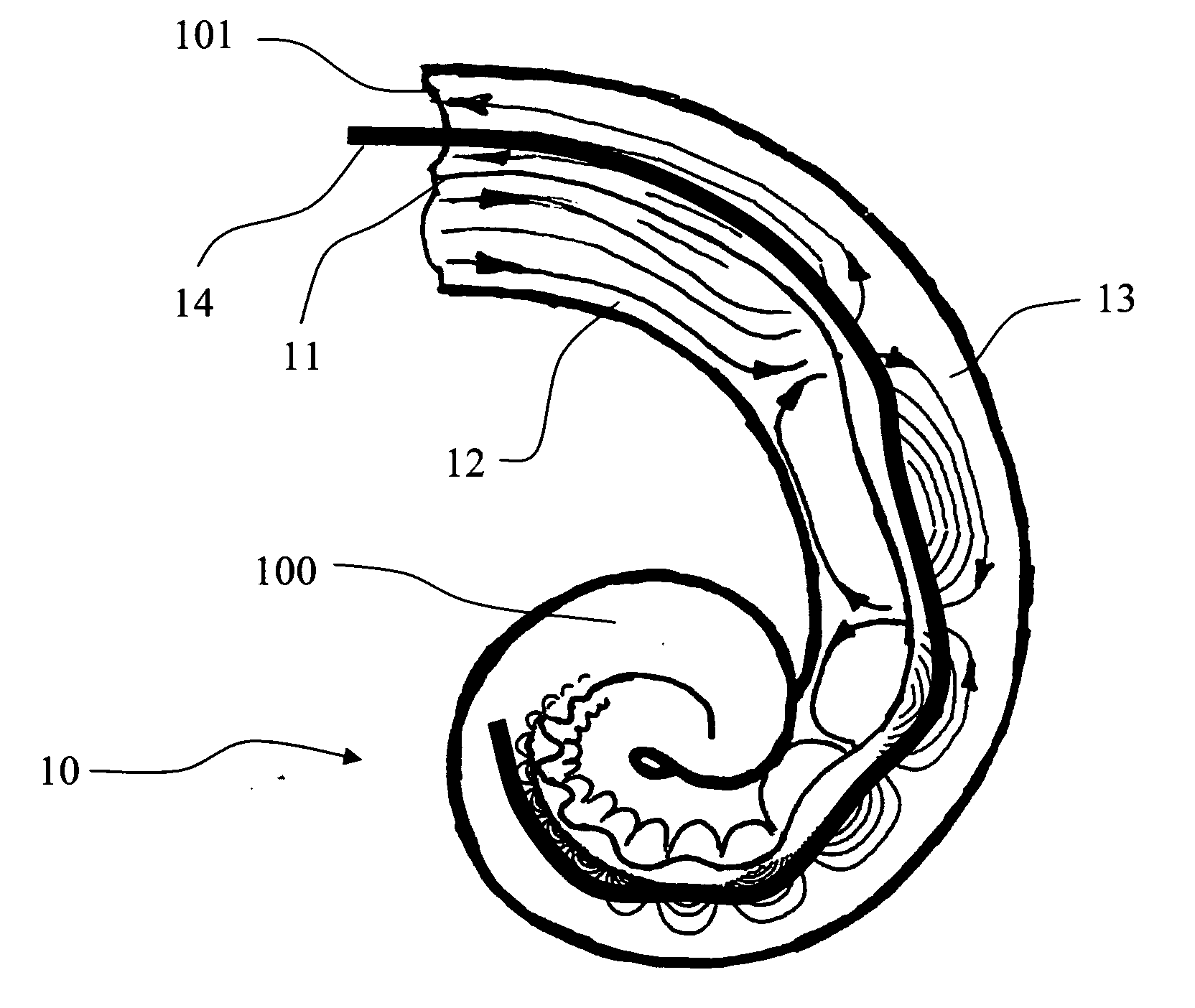Improvements for cochlear implants
a technology of cochlear implants and implants, applied in the field of cochlear implants, can solve the problems of difficult implantation into post-lingual adults, difficulty in detecting speech, and loss of hearing, and achieve the effect of accurately mapping pitch perception
- Summary
- Abstract
- Description
- Claims
- Application Information
AI Technical Summary
Benefits of technology
Problems solved by technology
Method used
Image
Examples
first embodiment
[0045]In the current invention the auditory brainstem response (ABR) provides a mechanism for indirectly measuring the tonotopic map for an individual. The latency of the ABR at specific stimulus frequencies can be used to derive a time / latency-frequency relationship, which can then be used to infer the required place-frequency map. One method of doing this is described in T. Dau, O. Wegner, V. Mellert, and B. Kollmeier, “Auditory brainstem responses with optimized chirp signals compensating basilar-membrane dispersion,” J. Acoust. Soc. Am. 107 (3), March 2000. Once the place-frequency map is obtained it can be used to determine the correct position for an electrode array of a cochlear implant. The following procedure is followed:[0046]1. A tonotopic (place-frequency) map of electrode insertion depth against cochlea nerve frequency is constructed for each patient using an evoked potential, such as the Auditory Brainstem Response (ABR);[0047]2. A series of patient specific stimuli ar...
second embodiment
[0061]Therefore, in the current invention it is envisaged that the Greenwood function can be adapted to construct a formula that is more closely matched with the auditory brainstem response of an individual patient and so create the best performing implant. In particular, the Greenwood function may be “shifted” (via an offset to the variable x), so that it exactly passes through (that is, complies with) a measured place-frequency point. Clearly, this is equivalent to physically changing the insertion depth of the implant, but requires only a change to the electrode-pitch map. However, if more than one place-frequency point can be measured, then the slope of the Greenwood function can also be modified (by altering the variable a) so that the place-frequency map is both shifted and either “stretched” or “compressed.” With more points, the Greenwood function may be modified to fit a polynomial or more complex curve. In this way, the adapted Greenwood function can then be used to progra...
PUM
 Login to View More
Login to View More Abstract
Description
Claims
Application Information
 Login to View More
Login to View More - R&D
- Intellectual Property
- Life Sciences
- Materials
- Tech Scout
- Unparalleled Data Quality
- Higher Quality Content
- 60% Fewer Hallucinations
Browse by: Latest US Patents, China's latest patents, Technical Efficacy Thesaurus, Application Domain, Technology Topic, Popular Technical Reports.
© 2025 PatSnap. All rights reserved.Legal|Privacy policy|Modern Slavery Act Transparency Statement|Sitemap|About US| Contact US: help@patsnap.com



